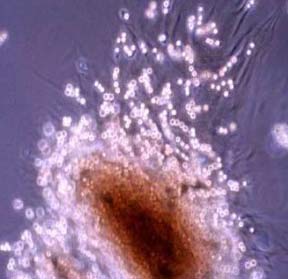Advances in tissue technology: Hope for the treatment of future diseases
Tissue engineering is a relatively new field of clinical science and basic science, an area of interest in creating tissues that can increase or replace body parts. injured, disabled or ill.
The goal of tissue formation involves adding specific cell types to culture on the polymer scaffold that has the shape of tissue to recreate the shape. This polymer scaffold slowly disappears, while the cells continue to grow in the shape of this scaffolding. By using animal cells, there have been significant recent advances in skin, bladder, cartilage and other tissues.
Currently, scientists have applied tests of human cells from cartilage (chondrocytes) to a scaffold . If cartilage transplantation can proceed successfully under this method, scientists are also interested in deciding whether this development can be further developed by bone-building protein (osteogenic protein). -1), protein has the ability to increase production by chondrocyte transplantation of the major extracellular extracellular parent constituent, proteoglycan. This research has not been done before.
The test was conducted as follows: Obtain healthy ankle cartilage from an adult who died from the tissue and organs donation system called ' Gift of Hope ' in Elmhurst, Illinois. Next,

(Photo: Tetec-ag.de)
isolate and purify cartilage transplantation from cartilage with standard laboratory procedures. Then apply this cartilage graft to the smaller polymer scaffold (polyglycolic acid) when the scaffold has the shape of a spinal disc in the spine.
These three processes were created to compare the possible development of cells and the production of proteoglycan (one of the components of the joint):
-
The first process consists of a scaffold that is only treated with cells,
-
The second process consists of a scaffold with cells, which are inserted with bone-forming protein-1 into droplets,
-
The third process consists of a scaffold that unites the shells of bone-forming protein-1 that has a long and controlled effect along with the cells together.
These processes are maintained for 4 weeks, then analyzed to perform cartilage transplantation and produce proteoglycan. The results showed that the successful tissue development technique of cartilage transplantation on scaffolding and the increase in proteoglycan production by bone-1 protein, this protein is transported to cells by either Add in drops or create long and controlled effects.
This study has demonstrated that cartilage transplantation in humans can develop cartilage thanks to tissue development methods and promises further advances in tissue therapy with support. Help of laboratory facilities.
Thanh Van
- Advances in science in the near future
- Future breakthroughs
- New hope for cancer patients and endangered species
- Scary flies can cause diseases for humans
- Treatment of trauma through marine life
- Discussing to promote application of scientific and technological advances
- Development of kidney tissue from stem cells
- Viagra can save tigers from extinction?
- Apply information technology in the treatment of specific diseases
- Use fatty tissue stem cells to treat osteoarthritis
- Medical wonders in 2011
- New X-ray technology can see soft tissue
 Green tea cleans teeth better than mouthwash?
Green tea cleans teeth better than mouthwash? Death kiss: This is why you should not let anyone kiss your baby's lips
Death kiss: This is why you should not let anyone kiss your baby's lips What is salmonellosis?
What is salmonellosis? Caution should be exercised when using aloe vera through eating and drinking
Caution should be exercised when using aloe vera through eating and drinking